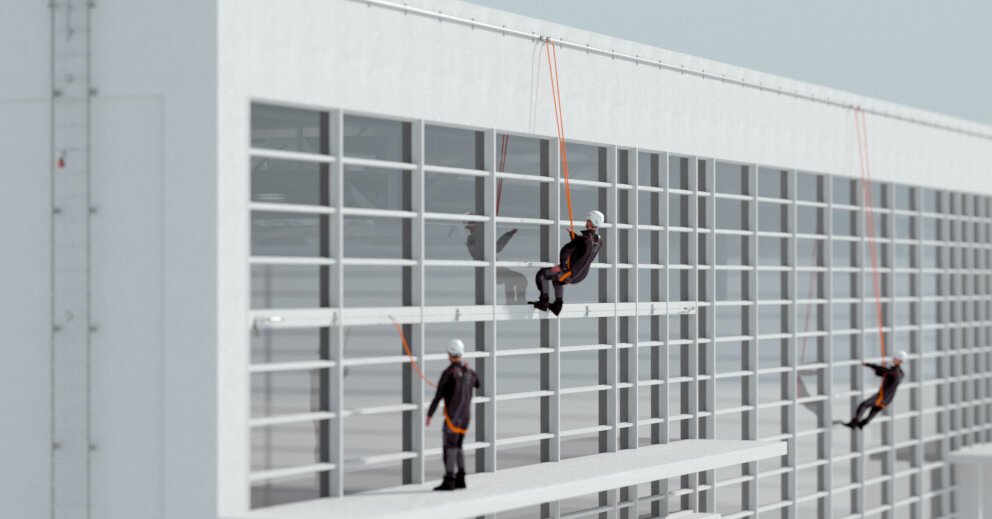Concrete pouring is a fundamental activity in construction projects—from building foundations and sidewalks to large-scale commercial structures. This activity involves the handling, placement, and finishing of concrete, and it comes with specific hazards that require targeted safety measures. By focusing on concrete pouring safety, organizations can ensure a successful and injury-free operation while maintaining quality and efficiency.
Understanding the Hazards of Concrete Pouring
Concrete pouring involves various risks that can affect both workers and the integrity of the structure:
- Chemical Burns and Irritation: Wet concrete is highly alkaline and can cause skin irritation or chemical burns. Prolonged exposure may also lead to respiratory issues if dust is inhaled.
- Musculoskeletal Injuries: The physical demands of mixing, lifting, and moving heavy materials can lead to strains and sprains.
- Slip and Trip Hazards: Spilled concrete, water, or debris on the worksite can create slippery surfaces.
- Equipment Risks: The operation of pumps, vibrators, and other heavy machinery used during pouring can result in mechanical injuries if not properly managed.
- Environmental Hazards: Extreme weather conditions (heat, cold, or rain) can affect both the curing process and worker safety.
Best Practices for Concrete Pouring Safety
1. Pre-Pour Planning and Risk Assessment
- Site Evaluation: Conduct a comprehensive assessment of the worksite to identify potential hazards, including uneven surfaces, obstacles, and environmental conditions.
- Work Method Statement: Develop a detailed plan that outlines the concrete pouring process, safety protocols, and roles of all team members.
- Equipment Check: Ensure that all machinery and tools (mixers, pumps, vibrators) are inspected and in good working order before beginning operations.
2. Engineering and Administrative Controls
- Designated Pouring Zones: Clearly demarcate areas where concrete will be poured, and restrict access to non-essential personnel to reduce the risk of interference.
- Proper Ventilation and Dust Control: Utilize ventilation systems and dust suppression methods, especially during mixing, to reduce inhalation hazards.
- Lockout/Tagout Procedures: When servicing or repairing equipment, follow strict lockout/tagout protocols to prevent accidental startup.
3. Personal Protective Equipment (PPE) and Safe Work Practices
- Protective Clothing: Require workers to wear long-sleeved, durable clothing, gloves, and waterproof boots to prevent skin contact with wet concrete.
- Eye and Face Protection: Provide safety goggles and face shields to guard against splashes and flying debris.
- Respiratory Protection: In areas with high dust levels, use dust masks or respirators to protect respiratory health.
- Manual Handling Training: Train workers on proper lifting techniques and use mechanical aids where possible to minimize musculoskeletal injuries.
4. Equipment and Process Controls
- Use of Mechanical Aids: Utilize concrete pumps and conveyors to reduce the need for manual handling, thus decreasing the risk of overexertion.
- Formwork Stability: Ensure that formwork and molds are properly secured and inspected regularly to prevent collapses during the pour.
- Slump Testing: Conduct slump tests to verify the consistency of the concrete mix, ensuring it meets project specifications and minimizes the risk of structural failures.
- Real-Time Monitoring: Employ digital sensors and monitoring systems to track temperature and moisture levels, ensuring optimal curing conditions and identifying potential hazards early.
5. Environmental and Weather Considerations
- Weather Monitoring: Check forecasts and adjust work schedules to avoid extreme weather conditions that could impact both worker safety and concrete quality.
- Shade and Hydration: Provide shaded rest areas and ensure an adequate water supply to help workers stay hydrated and avoid heat-related illnesses during hot weather.
6. Emergency Preparedness and Response
- First-Aid Readiness: Equip the site with first-aid kits specifically designed for chemical burns and other injuries related to concrete exposure.
- Spill Management: Develop a spill response plan that includes immediate measures for neutralizing and cleaning up wet concrete to prevent slips and chemical burns.
- Training Drills: Regularly conduct emergency drills to ensure that all personnel are familiar with evacuation routes, first-aid procedures, and emergency communication protocols.
Conclusion
Concrete pouring is a high-stakes activity that demands meticulous planning, robust safety controls, and continuous training. By understanding the specific hazards associated with concrete work and implementing targeted best practices—from pre-pour assessments and proper PPE usage to equipment checks and emergency preparedness—organizations can create a safer work environment that minimizes risks and enhances overall project success.
Investing in concrete pouring safety not only protects workers but also ensures the structural integrity and quality of the finished product, ultimately contributing to the long-term success and sustainability of construction projects.
Discover more from HSEProHub
Subscribe to get the latest posts sent to your email.



